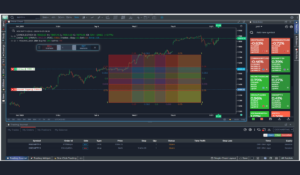
An overview of paper trading
When trading on paper, participants make their purchasing and selling decisions in a simulated market setting rather than submitting actual orders to a brokerage. The procedure can be straightforward just a few figures on a napkin or sophisticated, requiring spreadsheets to dissect numerous elements into their component pieces for consideration and analysis.
Paper trading is a popular tool among traders for learning the fundamentals of market strategy without taking real-money risks. Paper trading is a useful tool, particularly for newcomers, as it enables traders and investors to practice, test techniques, and understand the dynamics of the financial markets. It provides a risk-free setting for practicing and gaining self-assurance. Participants can learn vital abilities and knowledge required for success in actual trading.
However, it’s important to recognize the limitations of paper trading and think of it as a stage before moving on to live trading, when factors like emotions and real money are involved. Paper trading can play a crucial role in a trader’s quest for success in the financial markets if it is treated seriously and with discipline. This overview examines the idea of paper trading, as well as its advantages, practicality, and limitations.

What Exactly is Paper Trading?
An investor can practice buying and selling without putting any actual money at risk by engaging in paper trades, which are simulated trades. The phrase has its roots in the days when wannabe traders would test their skills on paper before investing in active markets. While learning, a paper trader records each transaction by hand in order to keep track of false trading positions, portfolios, and gains or losses.
With the emergence of online trading platforms and software, paper trading’s popularity and convenience have expanded. With the use of modern simulators, investors can trade real-time markets without committing any real money, and the process can be used to assess the viability of investment ideas.
Utilizing trading platforms or software that offers access to real-time market data and transaction execution is part of the process. However, as there is no real money exchanged, any profits or losses made through paper trading are totally fictitious.
For beginners, paper trading is especially helpful since it enables them to become familiar with the nuances of trading, test out different techniques, and build confidence without taking any financial risks. It makes it easier to comprehend market dynamics, analyze how news affects asset prices, and evaluate performance in a safe environment.
Before engaging in live trading with real money, paper trading can be a useful stepping stone for traders, giving them the chance to develop their skills and get ready for actual trading challenges.
Also Read : Backtesting Trading: A Step-by-Step Guide
Benefits of Paper Trading
1. Limits Risk
The absence of financial risk is the main advantage of paper trading. To ensure that no real money is involved, traders make trades using virtual funds. This risk-free environment enables both novice and seasoned traders to experiment with different trading and investment strategies without worrying about suffering monetary losses. Paper trading allows for experimentation and a deeper understanding of market dynamics because the risk is restricted.
2. Lowers Stress
The use of real money in live trading can result in a great deal of stress and emotional pressure because of the threat of financial loss. Paper trading, in contrast, removes this tension because no real money is at stake. Without the emotional pressure of actual money, traders may focus only on developing and perfecting their trading skills. This stress-free setting encourages better judgement and permits a sharper concentration on creating successful trading methods.
3. Practice and Learn
For growing traders, paper trading provides the best learning environment. It enables people to practise trade execution in a market simulation environment that closely resembles actual market circumstances. Participants can try various order types, familiarize themselves with various trading platforms, and experiment with a variety of asset classes. This practical training helps traders get familiar with trading tools and successfully negotiate market complexity.
4. Gain Optimum Experience
Traders can obtain the most knowledge and experience into the workings of the financial markets by engaging in paper trading. Without putting their money at risk, participants can track price changes, examine market trends, and determine how news and events affect asset prices. For laying a firm basis and improving trading expertise, this experience is priceless.
Also Read : Footprint Charts – The Complete Trading Guide
Final Verdict
Paper trading gives traders and investors a risk-free setting in which to practice and learn without having to make real financial commitments. It enables people to experiment with various trading techniques, comprehend market dynamics, and gain self-assurance. Paper trading’s lack of financial risk lowers anxiety and encourages wiser choices. This platform offers practical exposure with a variety of order types and trading platforms, making it an ideal learning environment. Participants can learn important lessons and get experience in the financial markets without having to risk their own money.
With more experience, traders are better prepared to make the shift from paper trading to live trading, which results in a smoother transition. GoCharting is the best paper trading platform in India for traders looking for a dependable platform to improve their trading experience. This app delivers real-time market data and execution capabilities without any financial risk. Using the GoCharting paper trading platforms gives traders the ability to hone their trading techniques, build their confidence, and get ready for actual trading, which helps them succeed in the volatile world of the financial markets.